There’s a place my family goes on Sundays, a wildlife refuge just up the road. When we go there, we make an offering and we take turns praying and we look and smell and listen. We’ve been going most Sundays for about four years now, since before my son was born.
This year, there’s an enormous hatch of caterpillars—thousands and thousands of them—defoliating a whole hillside of native ceanothus, a shrub I love. If you are quiet, you can hear them chewing.
You don’t have to be quiet to hear the birds.
I say it in this episode and it’s true: before I started working with Rich Hatfield, I more or less thought that “wildlife” started with birds and went up from there. At some point between childhood, when I loved wooly bears and elder bugs, and early adulthood—when, sure, I sometimes noticed butterflies and sometimes teased my then-boyfriend for being afraid of bees—insects mostly fell off my radar.
But, as Rich points out in this episode, a brood of baby birds needs thousands—thousands—of caterpillars to grow, fledge and leave the nest. A nestful of chickadees will eat 6,000 to 9,000 caterpillars. That’s a lot of work, Mom and Pop chickadee.
And that’s a lot of insects. And that’s Rich Hatfield’s delightful, diverse and beautiful world. Truly, it’s most of the animal world! Around 97% percent of Earth’s terrestrial animals are invertebrates (animals without a spine), including insects (80% of all animal species), molluscs, arachnids, nematodes, etc.
Rich Hatfield is a conservation biologist with the Xerces Society, the only international conservation organization exclusively focused on invertebrates. His yard in Portland, Oregon is a little swatch of native Willamette Valley prairie abuzz athrum achomp and humming with insects. He has been working in bumblebee conservation for twenty five years. He’s a good, skeptical scientist (he pushes back on some of my chicken little-ing early in this episode); a father; and a fine teacher of enthusiastic amateur naturalists like me.
And I wanted to talk to him because working with him, over the last several years of contributing to the Pacific Northwest Bumblebee Atlas, has changed my lens for what effective action for Earth can look like—and feel like.
I just did a search for “insect” in my phone’s photo gallery and the several hundred photos that popped up are a direct testament to this new, closer field of encounter between myself and the rest of the animal kingdom—what Rich calls “the wildlife safari in your backyard.”
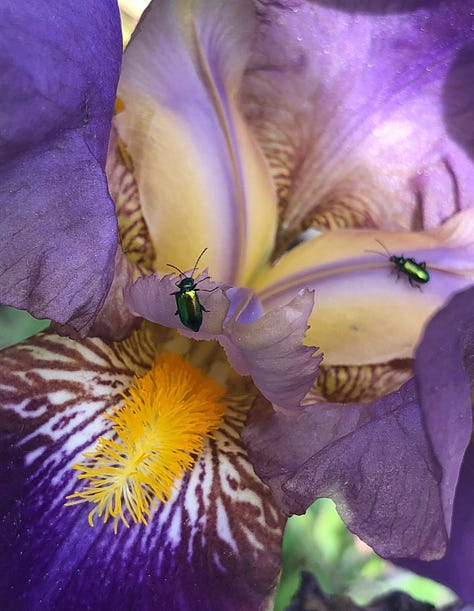
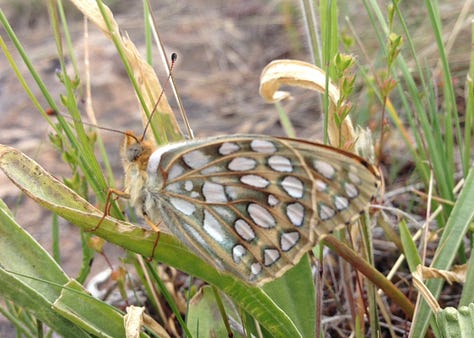
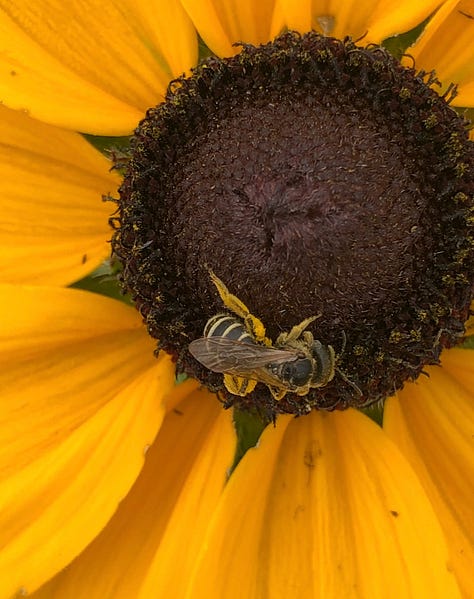
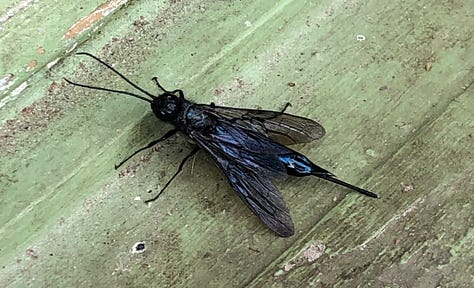
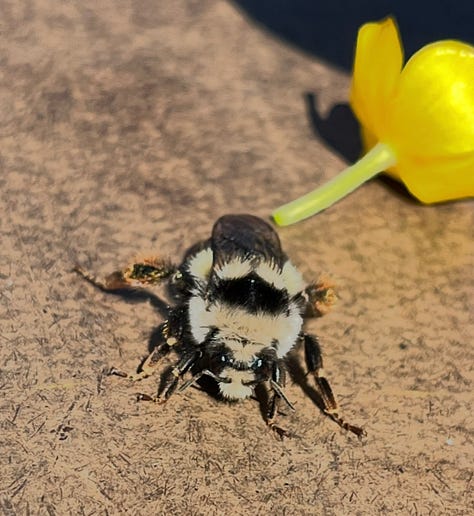
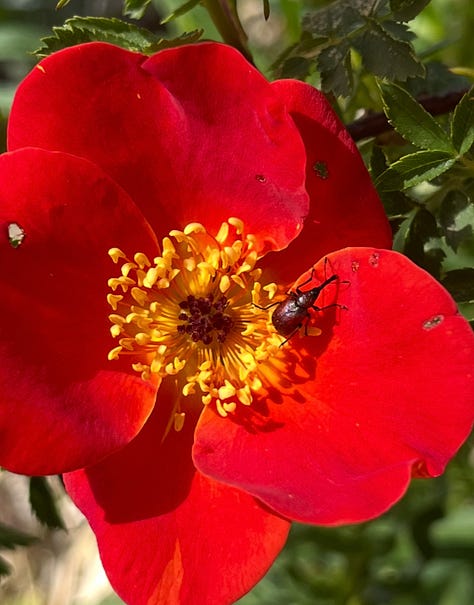
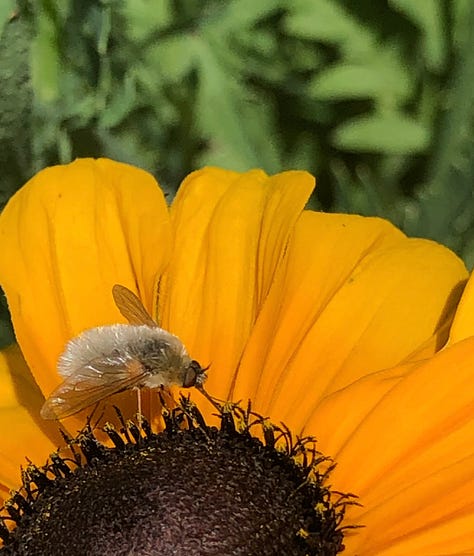
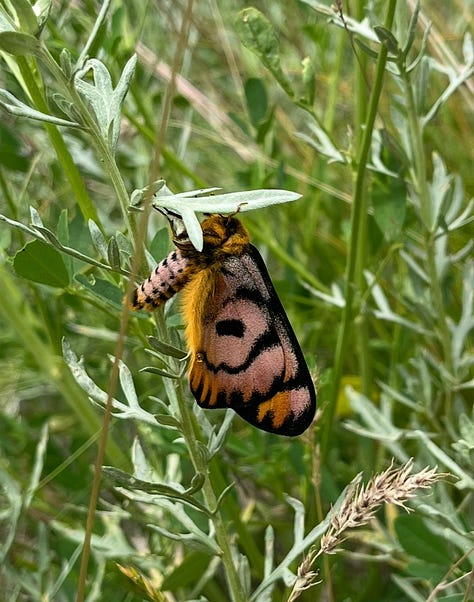
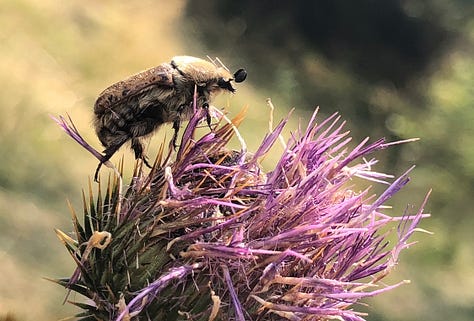
I use iNaturalist (which runs the Seek app) to help me ID critters I don’t know. That red one on the copper rose? That’s a Rose Curculio. Adorable bug, adorable name. One benefit of identifying creatures with iNaturalist, or other citizen science platforms, is that as you do so, you’re contributing to datasets that conservation biologists like Rich can use to do their work. That’s a use for AI that I can get behind.
Rich can take much of the credit for reigniting my interest in insects, which I am delightedly passing on to my kids, and I thank him for it in this episode. And for Rich, who is working in a contemporary conservation environment that feels, for lots of reasons, grimmer and grimmer—and in a time when insects, for lots of reasons, are really struggling—I think our conversation was a refreshing reminder of the many many ways his work has directly seeded a sense, among many people, not only of appreciation for this often overlooked category of animal life, but also of our individual agency to shape and create more space for other kinds of life on earth.
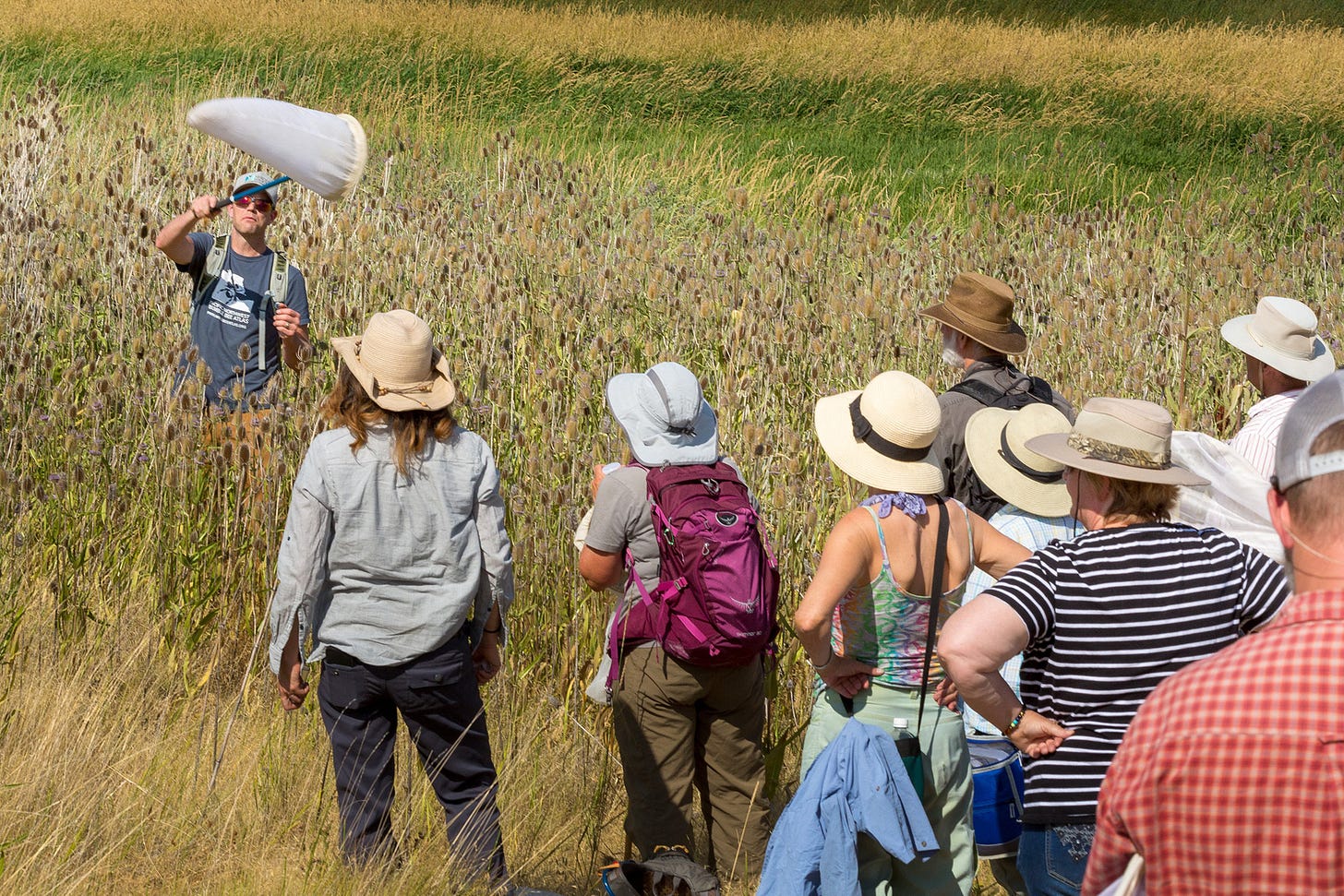
As Rich says in this episode, several times: most people are good. We want to help. And what he has done, what the Xerces Society has been doing, is giving people who want to help clear pathways to help.
Pathways that inform scientifically solid conservation efforts, like the Bumblebee Atlas, which started here in the Pacific Northwest and is now engaging thousands of volunteers to gather bumblebee data with a common set of protocols across much of the continental U.S. Pathways like empowering farmers, restoration practitioners and other land managers to use best practices for “pest” management and pollinator enhancement on the lands they tend. Pathways like habitat kits and plant lists that can help anyone with a yard or a porch create habitat for the 97% of species that are not only interesting, not only beautiful, but also absolutely foundational to human flourishing.
After all, we’d have no fruit, no healthy soil, and very little complex life without these invertebrates that pollinate, create fertility, and feed the other animals.
Maybe you’re one of those people who loves the living world, who wants to help. I bet you are. Maybe you love going out to watch wildlife—you can do it at home, too; and planting native plants (and laying off the pesticides) will dramatically increase your opportunities to see cool critters. Maybe you feel helpless in the face of so much destruction—you can do something, you can help; even a window box of flowering herbs will feed wildlife.
There’s still time to add native plants to your garden this year. Check out Xerces’ list, or this one. “Start with a little corner,” Rich says, “and see how you feel.”
You can help, and what you give will come back to you. Anyone can help. As Rich affirms, early in this episode, it’s a lot easier to build habitat for a bee than it is to build habitat for a polar bear. And building habitat? That’s agency, my friends. That’s real. Build it and they will come, Rich says. And they will. And it’s delightful. I can attest, and so can my son, for whom bumblebee (“bun-da-day”) was among his first words.
His very first word? Bird.
We looked up those caterpillars when we got home from the wildlife refuge on Sunday. They’re the caterpillars of California Tortoiseshell butterflies, which are closely associated with ceanothus, and which are known for occasional “population explosions.” That’s what’s going on this year, clearly. It’s going to be a maelstrom of butterflies up there in a couple of weeks, when these beautiful chrysalises split open. And, according to Wikipedia, ravens are known to feast on the California Tortoiseshell butterflies in their big hatch years. So we’ll go back next week, and the week after that, and see: the shrubs growing new leaves, the butterflies unfolding, the birds.
Gratitudes for this episode include: to Rich, for his heart and his work and his patch of native prairie; to my partner, for creating the pond that has added a whole nother aquatic layer to our backyard wildlife safari; to my son, for all his noticing; to Harold, and this is a big one, for offering the use of his land, the land behind our backyard, for fruit and community and pollinators; to my mother-in-law for the strawberries, and for letting my son pick bouquets from the wildly flowering understory of her orchard; to the baby robin who hopped across my butt the other day when I was lying in the shade reading; and to all of you, for listening.

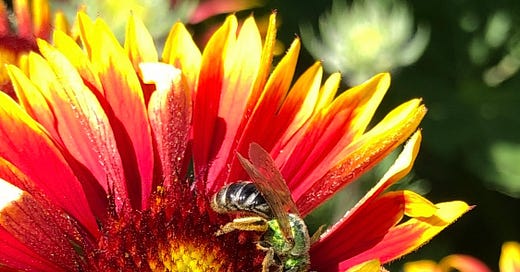


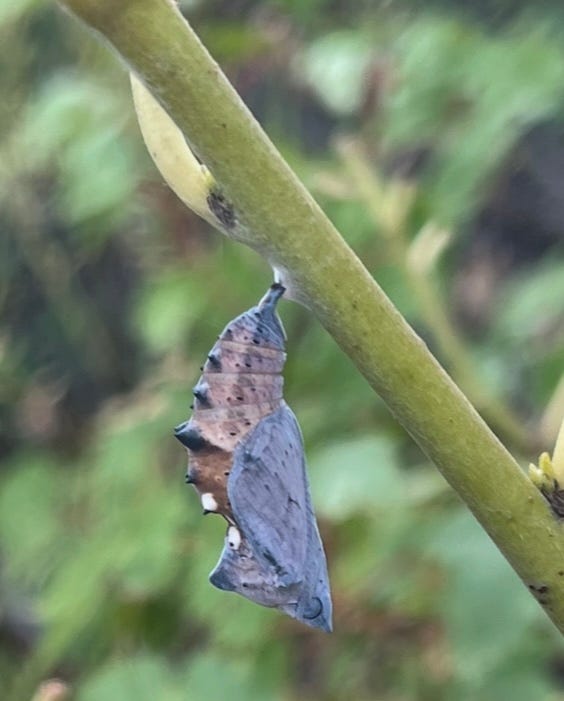








Share this post